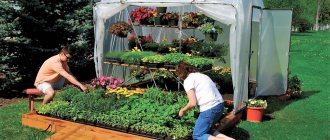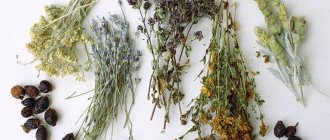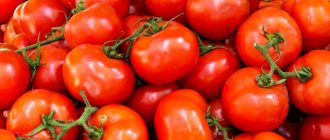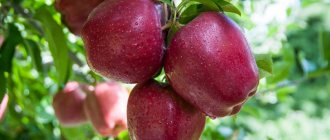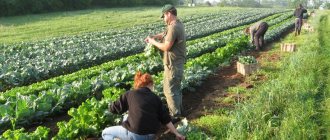Growing seedlings as a business is promising and relevant. The profitability of this project is quite high, and reviews from the owners indicate the attractiveness of such an activity and good profits.
Of course, in order to succeed in implementing such an idea, you need to have certain knowledge, skills and experience in growing plants. You will also have to take into account many factors that ultimately affect demand and the rate of return on investment. But with the right and focused approach, you can expect the business to be successful.
Peculiarities
This market segment is still only partially filled. And although there are many large farms and nurseries offering large volumes of plants, they are still not enough to provide potential clients with seedlings, saplings and flowers.
Therefore, the niche remains free and accessible to a novice entrepreneur. If you focus on any copies that are not widely available, you can count on rapid growth of your customer base.
Potential buyers include:
- amateur gardeners;
- owners of summer cottages, cottages;
- landscape design firms;
- botanical gardens;
- city administration involved in the arrangement of parks, flower beds, sanatoriums, etc.
Depending on which client you are targeting, you should wisely select the type of plant itself. Thus, seedlings are of interest to summer residents, and conifers are a means of improving the suburban area of wealthy people.
Flowers that can be grown in pots at home or roses that are bought for various holidays are also in demand all year round. It is important to successfully combine the listed crops with each other in order to increase the profitability of the project.
Another significant advantage is that you can start a seedling business with any amount available to you. At the start, it is enough to start growing and propagating simpler and faster-growing plants, for example, raspberries, gooseberries or even roses. In just six months or a year you can receive your first profit and invest it in further development.
If you have your own dacha or suburban area and small volumes of shrubs, you will need a minimum amount of investment to sell seedlings. It will be enough to purchase only seed material and some hand tools for caring for plants.
One of the disadvantages is relative seasonality. After all, customers buy such goods only in the spring, and less often in the fall. Summer and winter remain without profit at all. But at the same time you will have to work and care for the plants all year round.
During the season, seedlings bring a solid profit, because the cost of one copy is quite high - starting from 200-300 rubles and reaching, depending on the variety, several thousand. By selling them in large quantities, you can completely recoup your initial investment in one year.
With limited experience and knowledge, it is worth doing another type of business - resale of finished goods. To do this, you will have to search for cheap material and offer it to customers at a higher price. But this direction will be less profitable than growing plants yourself.
Growing fruit tree seedlings
Technology for growing fruit tree seedlings
The first field of the nursery (the next field, the field of oculants)
Soil preparation . The main task of preparing the soil for a nursery of fruit tree seedlings is to create a deep nutrient layer and a leveled surface. To do this, add 30-60 tons of manure, 60-90 kg of a.m. phosphorus-potassium fertilizers per 1 hectare and carry out plantation plowing to a depth of 40-45 cm on insufficiently thick soils and 50-60 cm on deep ones. Podzolic soils are plowed to a depth of 20 cm with loosening the bottom of the furrow by 10-15 cm. For deep planting, it is better to apply fertilizers after planting and plow them to a depth of 25-35 cm. After plowing, the soil is developed with cultivators, harrows and leveled. Plowing time for spring planting is autumn, for autumn planting - 2-3 months before planting.
The timing of planting fruit tree seedlings depends on the zone and method of planting the next nursery field. In the south, autumn planting gives the best results. At this time, the rootstocks take root well and begin to grow together and earlier in the spring. In areas with harsh snowless winters, rootstocks are planted in the spring. In the spring, the next nursery field is planted with winter grafts.
The density and planting pattern of rootstocks are related to the vigor of plant growth, the age of the planting material produced and growing conditions. In most areas, when growing two-year-old apple tree seedlings on vigorous rootstocks, the distance between rows is 80-90 cm, and in rows -25-30 cm (40-45 thousand rootstocks per 1 ha). For growing two-year-old pear and apple seedlings on medium-sized rootstocks, the planting scheme is 80X25-30 cm. When growing annual seedlings of all breeds, the feeding area is reduced to 70-80X20-25 cm. Leading producers to increase the yield of annual seedlings to 80-100 thousand per 1 ha Nurseries on a high agricultural background use two-row strip planting with distances between strips of 70 cm, between rows in a strip - 20-30, and in rows -10-18 cm. For better illumination of plants, the rows are directed from north to south.
The first field of the nursery is laid out in various ways: with pre-grown rootstocks, less often - by sowing seeds in a permanent place and grafted plants (oculants and winter grafting).
Planting the first field with rootstocks. To establish the next field in this way, annual rootstocks are used, previously grown at the propagation site or in greenhouses, sometimes in greenhouses. It is allowed to plant two-year-old rootstocks grown in a re-school or by green cuttings.
For better survival and ease of planting, the roots of the rootstocks are pruned and the above-ground part is shortened. The main root of seedlings is cut with pruning shears at a distance of 15-20 cm from the root collar, and 5-10 cm is left at the lateral ones. For seedlings, the aerial part is left 20-25 cm long, for clonal rootstocks - 40-45 cm for deeper planting. Side branches, if any, are cut off with the exception of the top ones. Before planting, the roots are dipped in clay-manure or earthen mash prepared in a 0.002% heteroauxin solution for better survival and growth of rootstocks. To combat verticillium wilt of stone fruits, the above-ground part of the rootstocks is immersed for 3-5 seconds in a 1% DNOC solution.
Rootstocks in large nurseries are planted using a special planting machine SSHN-3, converted forest planting machines of the SLC-1 type, and in small areas - manually using a hydraulic drill, shovel, hoe or sword. For seedling rootstocks, the root collar is buried 5-6 cm. Clonal rootstocks (layerings) are buried 18-20 cm into the soil. The main indicators of planting quality are the tight fit of the soil to the roots and the strictly vertical position of the plants. Post-planting watering of plants and hilling with soil 10-15 cm after autumn planting and 6-8 cm after spring planting are very effective.
Laying out the next field by sowing seeds . In the south, the next nursery field can be started by sowing seeds, bypassing the school of seedlings. With this method, the cultivation of planting material is accelerated by one year, costs are saved and overgrowth of rootstocks is prevented. Selected seeds of stone fruit and pome-bearing species are usually sown in rows at the same time as for the school of seedlings, but with a lower (3-4 times) sowing rate, since the plant density in the next field of the nursery is less than in the school. The seedlings are thinned 1-2 times, leaving well-developed plants after 10-12 cm, replanting is carried out (seedlings removed during thinning are used) and the roots are pruned at a depth of 8-12 cm in the period from the appearance of cotyledons to the formation of two or three leaves. Thinning is best done after the growth of cut roots in seedlings has been restored. Good seed germination, strong and continuous growth of seedlings are achieved through strict adherence to the timing and depth of sowing, careful care, watering and fertilizing.
Planting the first field with seedlings in nutrient pots and cubes speeds up the growing of seedlings by a year and saves seed consumption. Cubes or pots are prepared on IG-9M or RGS-25 machines from a mixture of peat (40%), earth (40%), humus (17%) and sand (3%). Peat acidity should be 5.5-6. For 1 kg of mixture add 15-20 g of superphosphate, 1-3 g of potassium salt and 3-5 g of ammonium nitrate. Prepared cubes or pots are placed in greenhouses or film greenhouses in the south at the end of January, in the middle zone - in February. The seeds are pre-stratified and sown in boxes filled with greenhouse soil in such a way that picking can be done in late January - early February. Picking into cubes begins when the temperature under the film or frames reaches 18-200 C during the day and not lower than 6-80 C at night. They plant with springs or transplant plants in the phase of two cotyledons. Caring for plants involves systematically ventilating greenhouses or greenhouses, regularly moistening and removing weeds.
By the time of planting in the first field of the nursery, the rootstocks reach a height of 10-14 cm and have six to ten well-developed leaves. The best time for planting rootstocks in nutrient cubes in open ground in the south is the end of April - May, in the middle zone the end of May - mid-June, when the soil at a depth of 10 cm warms up to 100 C. Rootstocks are usually planted according to a 90x25 cm pattern in well-moistened furrows 15 deep -20 cm, for hydraulic drill or planting machines SKN-6, SKNB-4.
Seedlings in nutrient cubes or pots have a well-developed root system, begin the growing season earlier (by a month) and are better suited to budding in the year they are grown.
Caring for the first field of the nursery before budding . During the growing season, as necessary, cultivation of row spacing is carried out to a depth of 8-10 cm, loosening in rows, removal of weeds, nitrogen fertilizing at the rate of 30-60 kg of a.m. per 1 hectare, watering and protecting plants from pests and diseases. Good results are obtained by the mechanized method of soil cultivation proposed by the North Caucasus Scientific Research Institute of Horticulture, which consists of alternating hilling and unhilling of plants in rows using specially made razor and mouldboard hillers. To control weeds, you can use herbicides (simazine 8-16 kg per 1 ha, depending on the type of soil)
In addition to the above work, the lateral branches on the lower part of the stems are removed to a height of 20 cm in order to prepare this area for budding.
Budding is the most common method of propagating fruit plants in nurseries. Budding is grafting onto rootstocks of a scutellum of a variety with a single growth bud (eye). The method is characterized by simplicity, the highest productivity (up to 1500-1800 vaccinations per day), good survival rate (90-100%) and economical consumption of scion material (cuttings).
There are mainly three methods of budding: 1) in a T-shaped incision, 2) in the butt and 3) with a pipe. For budding into a T-shaped cut and a pipe, it is required that the bark on the rootstock is well separated from the wood. Butt budding can be performed regardless of the degree of bark separation. This method is simpler and more productive than others: strict adherence to the cut length of the shield is not required; the rootstock can be of any thickness. Butt grafting deserves widespread production testing in all zones of the country. Budding with a pipe is rarely used, for species with thick bark (walnuts, figs, etc.).
Budding is performed with special budding knives. It consists of the following operations: 1) cut or remove a section of bark on the rootstock, 2) cut off the shield with the eye from the cuttings of the variety, 3) insert or apply the shield into the cut or onto the section of the removed bark and part of the wood on the rootstock, 4) tie the budding area .
Various techniques have been developed for cutting the shield from a scion cutting, preparing a place for budding on the rootstock, and connecting the shield to the rootstock.
Depending on the budding method, a T-shaped cut is made on the rootstock, a section of bark with wood is cut off, the same area as the scion shield, or a ring, semi-ring or rectangular strip of bark is removed.
When making a T-shaped incision of the bark, first a semilunar transverse incision is made, and then a longitudinal one about 1.5 cm long. If the incision is bad, the incised bark is slightly moved apart with a special knife tip to make it easier to insert the scion shield. To speed up the execution of a T-shaped cut, the Kharkov Agricultural Institute has designed a special knife with a sharp “iron” at the end, with which the bark is cut in one motion from top to bottom.
To budding the butt, first make an oblique cut at an angle of about 450 in the lower part, and then using a knife blade from top to bottom, cut off the shield, which is the same in area as the scion shield. At the bottom of the cut, a recessed ledge is obtained, which secures the scion shield and facilitates tying.
For budding with a pipe, a strip of bark is cut out on the rootstock, identical to the strip of bark of the scion.
Scion shields are cut with a thin layer of wood against the bud or without wood. The first method is the most common, the second is more often used for stone fruits. A variation of budding with a wood-free shield is the removal of an eye with a strip of bark for grafting with a pipe, half-box, or rectangular shield. The scutes are most often cut from the base of the handle to its top, so that you can buminate with a knife without transferring the scute from one hand to the other. Budding from a knife is more productive. The length of the shield is 1.5-3 cm with an eye in the middle or slightly closer to the lower end, the cut surface is even and smooth.
The layer of wood for budding into a T-shaped cut must be very thin. This can only be done with a well-sharpened (like a razor blade) knife. Dirty, dried and accidentally wet shields do not take root.
The connection of the scion shields with the rootstocks is carried out quickly, achieving better contact of the cambial layers.
Strapping. The budding site is tightly tied with strips of synthetic films 10-12 mm wide and 20-30 cm long. You can use medical adhesive plaster, linden bast tapes and other materials. Thin polyvinyl chloride film is best suited; tying with adhesive film passes the test. Typically, tying is carried out from top to bottom, and when budding in the butt - from bottom to top. To do this, the end of the film is pressed with the index finger of the left hand slightly above the budding site, and with the right hand it is wrapped in a spiral with the tape, going down so that the edges of the turns cover each other. A gap is usually left near the eye (in apple trees the eye is sometimes closed). The binding ends below the budding site and the end of the film is secured with a knot or loop.
The rootstocks are budded from the north side in the direction of the row in order to reduce the risk of the scutes drying out and the buds being broken off by tools when cultivating the soil.
In most regions of Russia, they bud at a height of 5-12 cm or at the level of the root collar. In the Non-Chernozem zone, where there is a danger of the grafted buds getting wet, in the winter-spring period, as well as weak-growing rootstocks for deep planting, seedlings are budded at a height of 10-15 and even 20-25 cm.
To increase the yield of seedlings, some stone fruits and varieties of pome crops with reduced survival rate are grafted simultaneously with two eyes at the same height on opposite sides. If both eyes sprout in the spring, choose the best one.
The success of budding depends, first of all, on the speed and quality of all operations and compliance with deadlines.
Timing of budding. The main budding is carried out in the summer in June - July - August, when the stems of the rootstocks reach the required thickness (8-12 mm), the bark is well separated from the wood and the shoots on the mother trees from which cuttings are harvested are ripening. In the northern fruit growing zone, budding begins from June 15-20, in the middle zone - from June 20 to August 15-20, in the south - from late July to early September. First of all, vegetatively propagated rootstocks are budded, and then successively pear, cherry, summer apple varieties, apricot, plum, autumn and winter apple varieties, cherries and peach. Too early budding can lead to premature germination of the eyes and their death in winter, and late budding can also lead to poor fusion.
Preparation of scion cuttings. For budding on mother trees in an area of good crown lighting, normally developed, mature shoots of at least 30 cm in length are taken. All leaves are immediately removed, leaving petioles 8-12 mm long, and the lower part and top of the shoot with underdeveloped eyes are shortened. For budding, the eyes of the middle zone of the shoot are taken.
It is best to harvest cuttings early in the morning on the day of budding. They are tied into bundles of 50 pieces, always labeled and covered with wet burlap. During budding, the cuttings are placed with their lower ends in buckets with a small amount of water.
If necessary, the cuttings are stored in cool rooms, basements, refrigerators or iceboxes in damp sawdust or in plastic bags. The cuttings are sent in plastic bags or in boxes with moistened sawdust. The sections on the cuttings are first coated with molten paraffin.
Organization of work in budding. Budding is an important and responsible technique in a fruit nursery; it requires careful preparation and highly qualified workers. It is carried out according to a pre-drawn up plan, which indicates the amount of work, budding timing, grafted varieties, labor requirements, the required number of knives, cuttings and binding material.
For budding, teams usually consist of two people. Labor is separate. One only oculates directly, the other follows him with the tying. The auxiliary workers unearth the rootstocks before budding, wipe the budding area with a clean damp cloth, loosen the soil in the rows after budding and, in dry conditions, cover the plants with soil to a depth of 10-15 cm. This organization increases labor productivity and the quality of work during budding. If the bucer works quickly, a third worker is included in the team (two do the tying).
The master cultivator must have a knife sharpened to a razor sharpness, a whetstone, a belt for aiming the knife, an apron for cuttings and a bucket. To clean the knife blade, a strip of gauze is tied around the left wrist. Speed of operations, accuracy and cleanliness of cuts, tight fit and maximum coincidence of the cambial layers of the grafted components are the main requirements for budding.
In dry, windy, hot weather, budding is carried out in two shifts: early in the morning from 5-6 to 9-10 o'clock and in the evening from 16 to 20 o'clock. This makes the work of workers easier and improves the quality of budding.
Oculant care. After budding, the soil is loosened and, in dry areas of the country, watered. After about three weeks, the survival rate of the eyes is checked (summer-autumn inspection). The established scute has a normal color and a fresh appearance; the leaf petiole usually falls off easily when touched. In buddings that have not taken root, the petiole shrinks with the scutellum and does not fall off, the scutellum darkens and wrinkles. Rootstocks with unrooted scutes are marked by tying off the tops and budded a second time, i.e. do sub-culling if deadlines are not missed.
In the northwestern and northern regions, the film wrap is left in place for the winter; in the south, it is most often removed by cutting it with a knife. This is done so that when the trunks thicken in the autumn, the film does not cut into them and constrictions do not appear on them. In areas with harsh winters with little snow, the grafting site is covered with soil.
Where to begin?
To carry out the entire organizational process correctly, you need to draw up an action plan. You can implement the idea step by step:
- First, legalize your activities, that is, register with the tax service as an entrepreneur, farmer or company owner.
- Carefully consider the issue of studying the climate, soil, availability of groundwater and other features of the area. After all, the availability of growing certain plants will depend on these factors. The conditions for them must be suitable.
- Decide what exactly different clients are looking for and purchasing. Study existing competitors, that is, large farms that provide the region with some planting material. It is not profitable for you to plant something that sells out very quickly, but is also available in large quantities. It is better to give preference to those plants that will interest the owners of country houses, but are not properly represented in the area.
- Choose a plot of land for a garden or greenhouse according to the necessary parameters for the successful cultivation of certain specimens. Also take into account the accessibility of the area to the highway.
- If the nursery is large, you need to hire specialists who are well versed in plants to help.
- Purchase planting material, equipment, tools, fertilizers and other things necessary for gardening.
- Even before the product is ready for sale, you need to find and establish distribution channels.
Tips for choosing seeds
It was written above that it is better to purchase seeds from farmers or individual farms. When purchasing, the emphasis should be on seeds for seedlings. Try not to buy seeds in plastic bags; it is better to buy them in bulk and in paper bags or wrapped in rags.
If farmers cannot fully provide seeds, then the rest is purchased from seed institutes. It is worth noting that the opinions of businessmen regarding the purchase of seeds from farmers or seed institutes are divided approximately equally. Therefore, there is no danger or risk in purchasing seeds from one or the other.
Paperwork
Trade in seedlings requires official registration of the company. To do this, it is better to choose one of the acceptable forms:
- Peasant farm - peasant farm. You will have to rent or buy at least 1 hectare of land, which is more profitable for large volumes. In this case, documents of all co-owners of the business, an application, a decision on the establishment of the business are submitted, and the state duty is paid. This form of activity involves the creation of a large project and access to wholesale supplies of planting material.
- Private subsidiary plot – personal subsidiary plot. A better option for small entrepreneurs. In this case, there are tax benefits, but there are also restrictions on the quantity of goods sold per year and the opportunity to hire additional staff. Usually in such farms people get by with their families.
In both cases, you must indicate the correct OKVED code. This is 01.30, allowing the cultivation of any plant specimens for sale - cuttings, seedlings, saplings, seedlings, etc. Also indicate the appropriate code for retail or wholesale trade.
Range
The more different plants you can provide to your customers, the higher your chances of winning their favor. But in any case, the product must be of excellent quality. This is the only way to earn a good reputation for a company.
To decide what exactly you will do, you need to consider a number of factors:
- Soil composition and quality.
- Availability and depth of groundwater.
- Climate, weather phenomena, even the frequency and direction of winds in the region.
- Duration of the warm season.
- Demand for certain types of plants.
- Desired seasonality.
- Own strengths and knowledge.
So, there are several areas that can become your main trump card, or try combining some of them with each other:
- Berries - propagated by cuttings. It is part of a plant's shoot or root. It is important to separate it very carefully so as not to damage it. You can cut them throughout the year. After this, they are placed in water and planted in a prepared container in the greenhouse. In the spring, the already grown cuttings are sold to dacha farms. Strawberries, wild strawberries and other delicious berries are in great demand. This also includes shrubs.
- Fruit trees are more difficult to grow, since you can expect profit from them only after two years of work. Their reproduction technology is based on grafting. To begin with, place the required seeds in a box with soil and sawdust and place it in a room where the air temperature is maintained at about 5 degrees. Then it is reduced to 1-2°. In the spring, ready-made seedlings are planted in the ground. As they grow, they are watered and fertilized. And only after a year can you start grafting. And only next fall they receive the first product ready for sale.
- Coniferous species are in great demand among private owners of cottage villages. After all, it is precisely these trees that can give an elite and respectable appearance to a site. Landscape designers often use them to improve country properties. True, growing such varieties is quite difficult and takes a long time. For the first result you will need to wait 3-5 years, but it is worth it, since the profit from coniferous seedlings is much higher and sometimes reaches several thousand rubles.
- Flowers enable the business owner to earn income all year round. Roses are considered the most popular in this case, since they are always in high demand. But you can opt for any specimens that are sold in the form of bouquets or grown by amateurs in pots at home.
Growing an apple tree from green cuttings
We know that most shrubs are easily propagated by green cuttings. Unfortunately, with an apple tree this turns out much worse, and the average summer resident most often fails. The fact is that it is difficult to create a suitable atmosphere in a greenhouse for guaranteed rooting of green cuttings.
In large agricultural enterprises this method is sometimes used. Green cuttings are rooted in special nurseries under a film cover, in which water is finely sprayed from the water supply through special sprayers under pressure, and thus the plants are constantly moistened and do not overheat.
Nurseries are set up on a flat, well-drained area, not clogged with perennial, difficult-to-eradicate weeds. The soil in the nursery consists of two layers: the lower one is drainage, the upper one is a mixture of peat chips and sand (2:1).
Preparation of cuttings includes the following steps:
- Shoots on the mother plant are cut off at the beginning of lignification. In the middle zone, cuttings of apple tree rootstocks can be prepared from the second half of May until the end of June.
- Cut shoots in plastic bags are brought to the nursery and there they are cut into cuttings that have two eyes with leaves. The grassy top of the shoot is discarded.
- Immediately after cutting, the cuttings are kept in water and then planted in a nursery.
Apple tree cuttings are kept in water until planted in the ground.
They are placed vertically and the lower ends are buried into the ground no more than 1–2 cm. Artificial fog is created by pressure in the water supply or a special pump. Moisturizing should not be excessive. At temperatures above 35 °C, the film is slightly lifted on the leeward side (for cooling).
Apple tree cuttings take root in 15–40 days. As a rule, an indicator of rooting is the growth of new shoots from the axillary buds of the cutting (usually from the top). After this, the nursery is gradually opened to harden the cuttings. Plants grow to 20–30 cm in height and develop a branched root system. In the fall they are dug up and stored in a trench until spring. In areas with mild winters, cuttings can be planted in the ground in the fall.
Video: some ways to grow seedlings
Site and equipment
You can start a small business with 0.1-0.2 hectares of land. It can be rented or purchased as a property, which in any case will not cost too much. It is important to choose the right location of the site so that it corresponds to the necessary parameters for the selected plant.
Its size depends on what exactly and in what volumes you are going to earn. So, flowers or berries can be grown in greenhouses, but an apple or cherry orchard will require a spacious open area.
If your plant nursery is visible from the main road between the city and the dachas, this will be a beneficial advantage. Bright signs, dense crowns of fruit trees, and advertising posters will attract the attention of passing owners of suburban areas and they will definitely stop by.
As for equipment, it is enough to purchase simple gardening tools, tools and pots. Also take care of the availability of planting material, seeds, suitable fertilizers and special means for treating plants against pests.
If you are going to install a greenhouse, then you need to order its construction or do it yourself. Also build outbuildings where the necessary equipment will be stored. For large volumes, it is advisable to install automatic watering systems, heating and lighting.
The open area should be protected from wind and strangers. To do this, a hedge is planted on the leeward side, high enough and dense to close the plants from drafts. A fence is installed around the perimeter.
Time to buy a seedling
The purchase of seedlings is not strictly tied to the time of planting. In this case, the natural and climatic zone is taken into account. If this is the center of the country or the north, then you need to buy one- or two-year-olds in the spring and plant them at the same time.
In the central zone, planting is also possible in the fall, if the root system is well covered with additional soil (“a cone” of one and a half meters). And also tie the trunk with kraft paper or spunbond to protect it from frost. Having previously dipped the root system in a clay-humus mash. Tree roots do not have a dormant stage and will continue to grow during the off-season.
If this is the south, buy both in the fall and in the spring, if you find a good seedling of the desired fruit tree. And immediately plant the tree in a permanent place. And with the same talker. If you cannot prepare it, purchase in advance a biochemical replacement for this root formation improver - Kornevin, Heteroauxin, Kornerost and a number of others.
Read here: How to choose a lawn mower - how to choose an inexpensive and reliable device for mowing the lawn
Staff
In private farming, family members serve as assistants. If you organize the cultivation of seedlings as a business on a large scale, then you will have to hire staff. It will be enough to find:
- 5-7 people to perform daily plant care.
- A technologist or agronomist who is well versed in all the intricacies and nuances of growing a particular variety.
- Accountant.
- Manager.
- Sales Manager.
You can perform some of these functions yourself. It is important that each of the workers has the appropriate education, as well as experience and knowledge in caring for each type of plant.
Landing
Make a soil cone in the hole, water it lightly, and stick a hewn stake into the center. Place the roots on the cone. Tie the stem loosely to the stake. Fill the roots to the top only with good soil, under no circumstances mixing clay from the same pit with it. Water well.
Bury the seedling into the soil up to the root collar, or better yet, 3-5 cm above ground level. Also place a soil cone on top if you plant in the fall, or a tree trunk ring in the spring for watering.
Search for clients
It is necessary to establish distribution channels for seedlings even before they reach marketability. To expand your customer base, you should use all available methods:
- Let's advertise in the media - newspapers, specialized magazines for gardeners, on television.
- Create your own website or online store and start promoting it.
- Communicate actively on specialized forums, on social networks and groups where summer residents of your region gather.
- Agricultural markets, farmers' markets and festivals can be used as trading platforms.
Please note that many buyers are not always fully aware of what care needs to be provided to certain plants. By offering professional advice in this area, you can generate a larger flow of grateful clients. It is also important to set prices for goods adequately. Too low ones will raise suspicion about the quality of the seedlings, and tall ones will scare people away.
The combination of an interesting offer, a good product and service, an affordable price and a good location will make the business successful and profitable. And although at first the income will be minimal, every year it will double, which will ensure good profits in the future.
Here you can download a free business plan for growing seedlings as a sample.
How to grow seed crops?
If you have any experience in garden fruit growing, growing pears, apple trees and similar crops looks much more promising.
Since this is done by grafting existing seedlings, in this case you will have to spend a lot of money on their initial cultivation. We will consider the general technology of growing seedlings.
The easiest way to grow suitable rootstocks is from the seeds of wild apple and pear trees. In this case, the cultivated variety that will be grafted onto them will acquire excellent resistance to domestic cold and local pests.
Thus, you will have to collect seeds. This is done in the fall; well-ripened fruits that are already beginning to rot are used as sources of seed material.
They are crushed by hand, taking care not to damage the seeds. Then they are thoroughly washed in running water and dried in a room with natural ventilation. If the seeds are overdried, then growing seedlings will be impossible.
Important! During the drying process, mold should not be allowed to form under any circumstances, as it will easily destroy all the seeds and leave you without profit for the next year. To do this, the material must be periodically turned over to promote better ventilation and drying.


